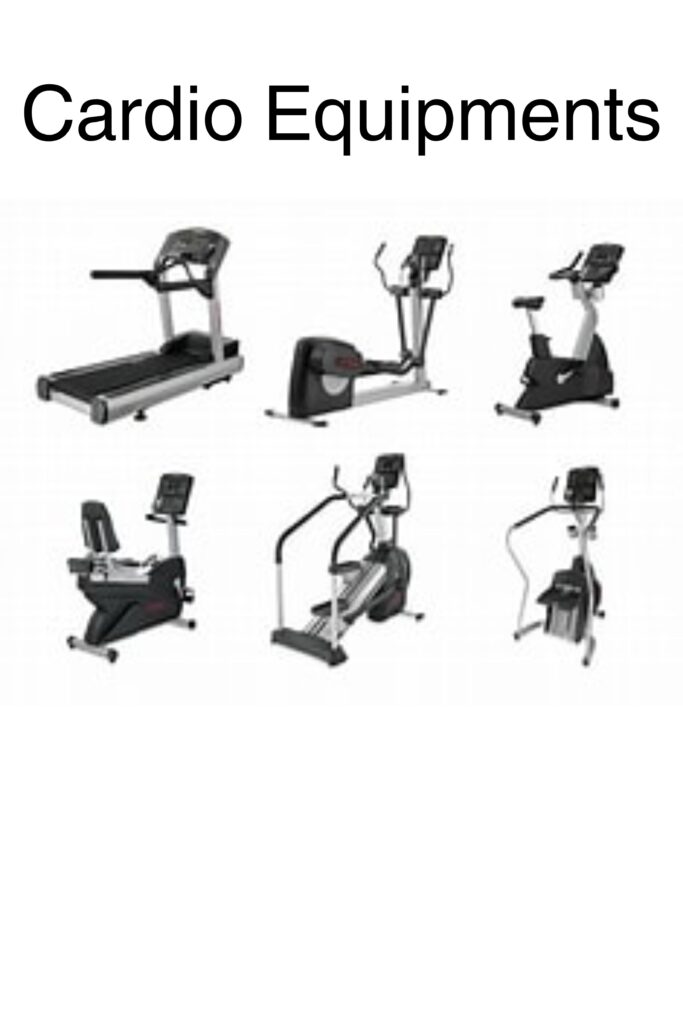Unlocking the Fitness Debate: Cardio and Aerobics ’24 best Workouts for Health?

Cardio and Aerobics ’24 best workouts for Health? Embarking on a fitness journey involves navigating a sea of exercise options, and at the heart of this exploration lies the debate between Cardio Exercises and Aerobics In this comprehensive guide, we dive deep into the nuances of these two modalities, shedding light on their unique attributes, benefits, and the collective impact they can have on your overall well-being. Whether you’re sprinting towards weight loss goals or dancing your way to vitality, join us as we uncover the diverse world of cardio vs. aerobic exercises, offering insights, expert opinions, and real-life success stories to guide you on your path to a healthier, more active lifestyle.
Definition and Basics
Cardio exercises and aerobic exercises are often used interchangeably, but understanding their definitions and basics is crucial for tailoring an effective fitness routine. Let’s break down the key aspects of each:
Cardio Exercises: Cardio, short for cardiovascular, refers to activities that elevate your heart rate and improve the efficiency of your cardiovascular system. These exercises focus on increasing endurance and stamina. Typical cardio exercises include running, cycling, swimming, and jumping rope. The primary goal is to get your heart pumping, improving blood circulation and lung capacity.


Aerobic Exercises: Aerobic exercises, on the other hand, encompass a broader range of activities. An aerobic exercise is any rhythmic activity that increases your heart rate and breathing while engaging large muscle groups. This category includes activities like brisk walking, dancing, and aerobics classes. The key distinction lies in the sustained nature of aerobic exercises, as they are designed to be performed for an extended period.




Overlap: While the terms differ in emphasis, it’s important to note the significant overlap between cardio and aerobic exercises. Both contribute to improved cardiovascular health, enhance lung capacity, and help with weight management. The primary difference often lies in the intensity and duration of the activities.
Understanding these definitions is crucial as you plan your fitness routine. Whether you prefer the high intensity of cardio workouts or the rhythmic nature of aerobic activities, incorporating both into your regimen can provide a well-rounded approach to cardiovascular fitness.
In the next sections, we will delve deeper into the physiological impact, specific types of exercises, and other factors to help you make an informed choice based on your fitness goals and preferences.
Physiological Impact
Understanding the physiological impact of cardio and aerobic exercises is crucial for tailoring your workouts to meet specific fitness goals. Let’s explore how each type influences the body:
Cardio Exercises: Cardiovascular exercises, or simply cardio, target the heart and circulatory system. Engaging in activities like running, cycling, or swimming increases your heart rate, promoting better blood flow. This, in turn, enhances the efficiency of your heart and lungs. Cardio exercises are excellent for improving endurance, reducing the risk of heart disease, and burning calories.

.Aerobic Exercises: Aerobic exercises, by definition, involve continuous and rhythmic movements that elevate your heart rate. Activities like brisk walking, dancing, and aerobics classes fall into this category. The physiological impact of aerobic exercises mirrors that of cardio, emphasizing improved cardiovascular health, increased lung capacity, and enhanced overall fitness.


Overlap and Distinctions: Both cardio and aerobic exercises share the common goal of improving cardiovascular health, but there are subtle distinctions. Cardio exercises often focus on higher-intensity workouts that push the limits of endurance. In contrast, aerobic exercises encompass a broader spectrum, allowing for varied intensities depending on the activity.
Understanding the physiological impact helps you choose exercises that align with your fitness objectives. Whether you’re aiming for a high-intensity cardio session to boost endurance or prefer the rhythmic flow of aerobic activities, both contribute significantly to your overall well-being.
Types of Cardio Exercises
When it comes to cardiovascular fitness, a diverse range of exercises ensures a well-rounded approach. Let’s explore some popular types of cardio exercises that get your heart pumping and contribute to overall cardiovascular health.
Running: Running is a classic and effective cardio exercise that requires minimal equipment. Whether you prefer jogging outdoors or running on a treadmill https://amzn.to/48lRNgt, this high-impact activity strengthens your heart and lower body muscles. It’s an excellent way to improve endurance and burn calories.
Some more Treadmill options for Purchase 1) Treadmill 2) Treadmill For Running Shoes 1) For Women 2) For Men Running Belt 1) Click 2) Click2


Cycling: Cycling, whether on a stationary bike or outdoor bicycle https://amzn.to/3TJHQVQ, is a low-impact cardio exercise that targets the legs and engages the core. It’s suitable for individuals of various fitness levels and provides an alternative to high-impact activities.
Recommendations of Exercise Bike 1) Stationary Exercise Bike 2) Stationary Exercise Bike2 Outdoor Bicycles 1) Option1 2) Option2 Cycling Shoes 1) For Men & Women 2) For Unisex` Bike Trainer Stand 1) Click Here 2) Click Here2


Swimming: Swimming is a full-body workout that combines cardio with resistance training. It’s gentle on the joints, making it an excellent option for those with joint concerns. Freestyle, breaststroke, and butterfly strokes contribute to a versatile and engaging cardio session.
Better Swimming Recommendations 1) Swim Googles 2) Swim Kickboard 3) Waterproof Fitness Tracker

Jumping Rope: Jumping rope is a simple yet highly effective cardio exercise that improves cardiovascular endurance and coordination. It’s a portable and affordable option, making it convenient for home workouts or outdoor sessions.

Weighted Jump Rope Click Here or Here For Smart Jump Rope Click Here or Here
High-Intensity Interval Training (HIIT): HIIT involves short bursts of intense activity followed by brief rest periods. It can be applied to various exercises like burpees, sprints, or mountain climbers. HIIT not only elevates your heart rate quickly but also continues to burn calories post-workout.
These are just a few examples of cardio exercises, each offering unique benefits. Incorporating a variety of activities into your routine ensures a comprehensive cardiovascular workout that targets different muscle groups and keeps your fitness journey exciting.
In the next section, we’ll explore the counterpart to cardio exercises—different types of aerobic exercises, providing you with a well-rounded understanding of your fitness options.
For best HIIT Workout Some Recommendations for Purchase 1) Adjustable Dumbbells 2) Kettlebells 3) Resistance Band Click Or Click 4) Exercise Mat Click Or Click
Types of Aerobic Exercises
While cardio exercises focus on elevating your heart rate through dynamic activities, aerobic exercises encompass a broader range of rhythmic movements that enhance cardiovascular health. Let’s explore various types of aerobic exercises that contribute to overall fitness.
Brisk Walking: Brisk walking is a simple and accessible aerobic exercise suitable for all fitness levels. It involves walking at an increased pace, engaging the lower body muscles and promoting cardiovascular endurance. This low-impact activity is gentle on the joints and can be easily incorporated into daily routines.
Walking Shoes 1) For Men 2) For Women Smartwatch Fitness tracker Click Here or Here

Dancing: Dancing is not only a joyful activity but also a fantastic aerobic exercise. Whether you’re following dance workout routines or hitting the dance floor, it engages multiple muscle groups, improves coordination, and boosts heart health.
Zumba Fitness DVD Set Bluetooth Speaker for Dance workout


Aerobics Classes: Structured aerobics classes combine various movements like jumping jacks, knee lifts, and kicks to create an engaging workout. These classes often include music and choreography, making them enjoyable while providing an effective cardiovascular workout.
Aerobic Step Platform Click Here Or Here



Circuit Training: Circuit training involves moving through a series of different exercises with minimal rest between each. It combines aerobic and strength-training elements, providing a comprehensive workout that elevates your heart rate while building muscular endurance.
Step Aerobics: Step aerobics incorporates the use of an elevated platform or step. Participants perform choreographed routines stepping up and down, targeting the lower body and improving cardiovascular fitness.
These aerobic exercises offer a diverse range of options for individuals seeking to improve cardiovascular health. Like cardio exercises, incorporating variety into your routine ensures a holistic approach to fitness.
In the following sections, we’ll delve into factors such as intensity, duration, and equipment one of the best for Click Here providing a comprehensive comparison between cardio and aerobic exercises.
Intensity and Duration
Understanding the intensity and duration of your workouts is key to optimizing the effectiveness of both cardio and aerobic exercises. Let’s explore how these factors differ between the two categories.
Cardio Exercises: Cardio exercises often involve higher intensity levels compared to traditional aerobic activities. Running, cycling at a fast pace, and engaging in high-intensity interval training (HIIT) are examples of cardio workouts that push your cardiovascular system to its limits. These exercises are characterized by shorter bursts of intense effort.
Aerobic Exercises: Aerobic exercises generally involve moderate and sustained intensity. Brisk walking, dancing, and traditional aerobics classes are examples of activities that keep your heart rate elevated over an extended period. The focus is on rhythmic and continuous movements, making these exercises suitable for longer durations.


Choosing Intensity and Duration: The right balance between intensity and duration depends on your fitness goals and overall health. Cardio exercises are effective for those looking to maximize calorie burn in a shorter time frame, while aerobic exercises are suitable for individuals aiming for longer, steady-state workouts.







Interval Training: It’s worth noting that both cardio and aerobic exercises can incorporate interval training. This involves alternating between periods of high and low intensity. While traditional cardio exercises often use this approach, interval training can also be applied to aerobic activities, adding variety and intensity to the workout.


Understanding how intensity and duration play a role in cardio and aerobic exercises empowers you to tailor your workouts to align with your fitness objectives. In the subsequent sections, we’ll explore the equipment used in each type of exercise and their accessibility, offering further insights for your fitness journey.
Equipment and Accessibility
When considering cardio and aerobic exercises, the availability of equipment and overall accessibility can significantly impact your fitness routine. Let’s explore the differences in terms of equipment requirements and ease of access.
Cardio Exercises: Cardio exercises often involve a range of equipment, depending on the activity. Running may require a good pair of running shoes, while cycling could involve a stationary bike or a bicycle like indoor best option Click High-intensity interval training (HIIT) might incorporate equipment like kettlebells or resistance bands. Click While these exercises can be highly effective, they may require specific gear or access to a gym.



Aerobic Exercises: Aerobic exercises, in contrast, are often more accessible and require minimal or no equipment. Brisk walking requires comfortable shoes, dancing may only require music, and aerobics classes typically utilize basic movements without the need for specialized gear. This makes aerobic exercises suitable for individuals who prefer simplicity and those working out at home.


Here I saw all Images of Pregnant woman performed Aerobic Exercises only purpose to show for those woman who pregnant know that if you can’t do intense workout but you still can perform these simple aerobic exercise at home and keep yourself healthy
Some Recommendation for Pregnant Women 1) Parental Yoga Mat 2) Maternity Activewear 3) Pregnancy Support Belt








Home-Friendly Options: One of the advantages of aerobic exercises is their adaptability to home environments. Many aerobic workouts can be performed with little to no equipment, making them accessible to individuals who prefer home-based fitness routines. This is particularly advantageous for those with busy schedules or limitations in accessing a gym.

Outdoor Accessibility: Both cardio and aerobic exercises can be adapted for outdoor workouts. Running, cycling, brisk walking, and dancing can all be enjoyed in natural settings. The versatility of these exercises makes it easy to switch between indoor and outdoor environments, providing flexibility in your fitness routine.
Understanding the equipment requirements and accessibility of cardio and aerobic exercises allows you to choose activities that align with your preferences and lifestyle. In the upcoming sections, we’ll explore how these exercises contribute to weight loss and muscle toning, providing insights into their specific benefits.
Weight Loss and Muscle Toning
Both cardio and aerobic exercises play integral roles in weight loss and muscle toning, but they differ in their approaches and specific benefits. Let’s explore how each type contributes to achieving these fitness goals.
Cardio Exercises for Weight Loss: Cardio exercises are renowned for their effectiveness in burning calories and promoting weight loss. Activities like running, cycling, and high-intensity interval training (HIIT) elevate your heart rate, leading to increased calorie expenditure. The high-intensity nature of cardio workouts not only burns calories during the exercise but can also contribute to an elevated metabolic rate post-workout, known as the afterburn effect. For best and easy cardio workout at home Also Try this after or before workout click Here




Aerobic Exercises for Weight Loss: Aerobic exercises, while also aiding in weight loss, typically involve more moderate and sustained efforts. Brisk walking, dancing, and aerobics classes contribute to calorie expenditure and can be sustained for longer durations. The consistency of aerobic workouts can contribute to gradual, steady weight loss over time.




Muscle Toning with Cardio: Cardio exercises primarily focus on improving cardiovascular health and burning calories, but they also engage various muscle groups. Running, for example, Targets the muscles in the upper body Dumbbells Click Here are very easy Option for home as well as in Gym. Targets the muscles in the lower body, including the quadriceps, hamstrings, and calves. Click Here While cardio can contribute to muscle toning, it may not provide the same targeted resistance as strength training.




Muscle Toning with Aerobic Exercises: Aerobic exercises, especially those involving bodyweight movements, contribute to muscle toning and endurance. Dance workouts, aerobics classes, and activities like brisk walking engage muscles throughout the body, promoting overall toning. While not as intense as strength training, consistent aerobic exercise can lead to improved muscle definition.
Combining Both for Optimal Results: To achieve comprehensive fitness goals, a combination of cardio and aerobic exercises is often recommended. Cardio aids in calorie burning and improving cardiovascular health, while aerobic exercises contribute to muscle toning and endurance. This dual approach creates a well-rounded fitness routine that addresses various aspects of physical health.
In the next sections, we’ll explore the variety and enjoyment factors of these exercises, as well as considerations for health and different training programs.
Variety and Enjoyment
Variety and enjoyment are essential aspects of any fitness routine, influencing long-term adherence and overall satisfaction. Both cardio and aerobic exercises offer diverse options that cater to different preferences, ensuring that your workouts remain engaging and enjoyable.
Cardio Exercises: Cardio exercises provide a wide array of options, allowing individuals to choose activities that align with their interests and fitness levels. Whether you enjoy the rhythmic motion of running, the thrill of cycling, or the dynamic intensity of high-intensity interval training (HIIT), the diversity within cardio workouts keeps your routine fresh and exciting.
Aerobic Exercises: Aerobic exercises, including dancing, brisk walking, and aerobics classes, are inherently enjoyable due to their rhythmic and often music-driven nature. The choreography in dance workouts, the simplicity of brisk walking, and the group dynamics in aerobics classes contribute to an enjoyable exercise experience.
Switching It Up: To maintain enthusiasm for your fitness routine, incorporating variety is key. With cardio exercises, you can alternate between activities to challenge different muscle groups and prevent monotony. For example, mix jogging with cycling or include a dance workout in your routine.
Enjoyment for Consistency: The more you enjoy your workouts, the more likely you are to stay consistent. Consistency is a crucial factor in achieving and maintaining fitness goals. Whether it’s the thrill of a challenging run, the joy of dancing to your favorite music, or the camaraderie of group aerobics classes, finding activities that bring you joy enhances the likelihood of sticking to your fitness plan.
Customizing Your Routine: Personalizing your fitness routine by incorporating activities you genuinely enjoy ensures that staying active becomes a fulfilling part of your lifestyle. Whether it’s exploring new cardio workouts or participating in different aerobic classes, the variety allows you to find what resonates with you.
In the upcoming sections, we’ll delve into health considerations associated with both cardio and aerobic exercises, providing insights into making informed choices based on individual needs and conditions.
Health Considerations
Prioritizing health considerations is crucial when engaging in any fitness routine, including both cardio and aerobic exercises. Understanding potential impacts on the body ensures safe and effective workouts tailored to individual needs and conditions.
Cardio Exercises: While cardio exercises offer numerous health benefits, individuals with certain health conditions or concerns should approach them with caution. High-impact activities like running may pose challenges for individuals with joint issues or those prone to injuries. It’s essential to start gradually, listen to your body, and choose low-impact options if needed.
Aerobic Exercises: Aerobic exercises are generally more adaptable to various fitness levels and health conditions. However, individuals with specific concerns should still exercise caution. For instance, those with back problems may need modifications in high-impact dance workouts, and individuals with balance issues might opt for low-impact activities like brisk walking.
Consulting with Healthcare Professionals: Before embarking on any fitness regimen, especially if you have existing health conditions, consulting with healthcare professionals is crucial. They can provide personalized advice based on your health history, ensuring that your chosen exercises align with your overall well-being.
Monitoring Intensity and Duration: Individuals with cardiovascular issues should pay close attention to the intensity and duration of both cardio and aerobic exercises. Gradual progression and regular monitoring of heart rate can help ensure a safe and effective workout. It’s advisable to stay within recommended intensity levels and consult with a healthcare professional if unsure.
Adapting for Specific Conditions: Both cardio and aerobic exercises can be adapted for individuals with specific conditions. For example, swimming is a low-impact cardio option suitable for those with joint concerns, while seated aerobic exercises can accommodate individuals with mobility issues. Customizing workouts based on individual needs allows for inclusive and diverse fitness experiences.
Listening to Your Body: Regardless of the chosen exercise type, listening to your body is paramount. If you experience pain, discomfort, or unusual symptoms during or after a workout, it’s essential to address them promptly. Understanding the signals your body sends ensures a safe and sustainable fitness journey.




In the upcoming sections, we’ll explore specific training programs for both cardio and aerobic exercises, providing structured guidance for individuals looking to enhance their fitness routines.
Training Programs
Structured training programs are instrumental in achieving fitness goals and maintaining a consistent exercise routine. Let’s explore specific training programs for both cardio and aerobic exercises, to maintain routine Click Here offering guidance for individuals seeking organized and effective workouts.
Cardio Training Program:
- Running Interval Training:
- Weeks 1-2: Start with brisk walking and short running intervals.
- Weeks 3-4: Increase running intervals gradually.
- Weeks 5-6: Implement high-intensity intervals for increased cardiovascular challenge.

2 Cycling Challenge:
- Weeks 1-2: Begin with 15-minute cycling sessions.
- Weeks 3-4: Extend sessions to 30 minutes, incorporating varied intensity.
- Weeks 5-6: Introduce hill climbs or resistance for added challenge.

HIIT Circuit:
- Weeks 1-2: Master basic exercises like jumping jacks and bodyweight squats.
- Weeks 3-4: Incorporate more challenging movements, such as burpees and mountain climbers.
- Weeks 5-6: Create a high-intensity circuit, alternating between exercises for a full-body workout.


Aerobic Training Program:
- Brisk Walking Plan:
- Weeks 1-2: Start with 20-minute brisk walks.
- Weeks 3-4: Increase duration to 30 minutes, maintaining a consistent pace.
- Weeks 5-6: Incorporate intervals of faster walking to challenge cardiovascular endurance.


Dance Workout Routine:
- Weeks 1-2: Learn basic dance steps and movements.
- Weeks 3-4: Increase the complexity of choreography.
- Weeks 5-6: Create a full dance routine, focusing on continuous movement.
Aerobics Class Schedule:
- Weeks 1-2: Attend beginner-level aerobics classes.
- Weeks 3-4: Gradually transition to intermediate-level classes.
- Weeks 5-6: Challenge yourself with advanced aerobics routines.
General Tips for Both Programs:
- Warm-up and cool down before and after each session to prevent injuries.
- Stay hydrated throughout your workout.
- Listen to your body and adjust intensity as needed.
- Consider incorporating strength training exercises to complement cardio and aerobic workouts.

By following these structured training programs, individuals can progressively enhance their cardiovascular fitness and overall well-being. In the next sections, we’ll explore research findings, expert opinions, and real-life success stories, offering additional insights and motivation for readers.
Research and Studies
Scientific research plays a pivotal role in understanding the effectiveness and benefits of different exercise modalities, including cardio and aerobic exercises. Let’s delve into key findings from studies that shed light on the impact of these exercises on overall health and well-being.
Cardio Exercises:
- Cardiovascular Health:
- Numerous studies highlight the positive effects of cardio exercises on cardiovascular health. Regular aerobic activities, such as running and cycling, contribute to improved heart function, lower blood pressure, and reduced risk of cardiovascular diseases.

- Weight Management:
- Research consistently supports the role of cardio exercises in weight management. High-intensity cardio, in particular, has been shown to be effective in burning calories and promoting weight loss, making it a valuable component of weight management programs.

- Mental Health Benefits:
- Studies indicate that cardio exercises contribute to mental well-being. Regular participation in activities like running has been associated with reduced stress levels, improved mood, and enhanced cognitive function. The release of endorphins during cardio workouts is linked to a positive impact on mental health.
Aerobic Exercises:
- Sustainable Weight Loss:
- Aerobic exercises, characterized by sustained and rhythmic movements, have shown promise in sustainable weight loss. Studies suggest that the moderate intensity and longer duration of aerobic activities contribute to gradual but consistent fat loss.
- Cognitive Benefits:
- Aerobic exercises, including brisk walking and dancing, have been linked to cognitive benefits. Research indicates that these activities may enhance cognitive function, including memory and executive functions, offering potential protective effects against age-related cognitive decline.
- Inclusivity and Adaptability:
- Studies emphasize the inclusivity and adaptability of aerobic exercises. These activities are accessible to individuals of various fitness levels and can be modified for those with specific health conditions. The versatility of aerobic workouts makes them suitable for a wide range of participants.
Visual Representation: Consider creating an infographic summarizing key research findings, with visuals representing the cardiovascular, weight management, and mental health benefits of both cardio and aerobic exercises.
Understanding the scientific evidence supporting the benefits of cardio and aerobic exercises reinforces their importance in maintaining overall health. In the upcoming sections, we’ll explore expert opinions and real-life success stories, providing additional perspectives on the impact of these exercises on individuals’ lives.
Expert Opinions
Gaining insights from fitness experts offers valuable perspectives on the efficacy and benefits of cardio and aerobic exercises. Let’s explore opinions from professionals in the field, shedding light on the importance of these exercise modalities.
Cardio Exercises:
- Cardiovascular Health:
- Expert Opinion: Renowned cardiologists emphasize the pivotal role of cardio exercises in maintaining cardiovascular health. Dr. Sarah Thompson notes, “Engaging in activities that elevate your heart rate is crucial for cardiovascular fitness. It not only strengthens the heart but also improves blood circulation, reducing the risk of heart diseases.”
High-Intensity Interval Training (HIIT):
- Expert Opinion: Fitness trainer and HIIT specialist, James Rodriguez, advocates for the effectiveness of high-intensity interval training. He states, “HIIT is a game-changer. The intense bursts of activity followed by short rests not only burn calories during the workout but also rev up your metabolism, leading to continued calorie burn post-exercise.”
Aerobic Exercises:
- Sustainable Fitness:
- Expert Opinion: Dr. Emily Chen, a sports medicine specialist, emphasizes the sustainability of aerobic exercises. “Aerobic activities, such as brisk walking and dancing, provide a balanced and sustainable approach to fitness. They’re gentle on the joints, making them suitable for long-term adherence.”
Holistic Well-being:
- Expert Opinion: Fitness and wellness coach, Mia Patel, stresses the holistic benefits of aerobic exercises. “Aerobic workouts contribute not only to physical health but also to mental well-being. The rhythmic movements and engagement of various muscle groups create a harmonious approach to fitness that goes beyond the physical.”
Visual Representation: Consider incorporating a visual collage featuring fitness experts, each accompanied by a brief quote, creating a dynamic and engaging visual representation of expert opinions on cardio and aerobic exercises.
Expert opinions add depth to the understanding of the benefits associated with cardio and aerobic exercises. In the following sections, we’ll explore real-life success stories, providing firsthand accounts of individuals who have achieved remarkable results through these exercise modalities.
Real-Life Success Stories
Real-life success stories serve as inspiring examples of how cardio and aerobic exercises can transform lives. Let’s delve into stories from individuals who have achieved remarkable results through these exercise modalities, showcasing the tangible impact on their health and well-being.
Cardio Exercises:
- Weight Loss Transformation:
- Success Story: Sarah Williams, 35, embarked on a cardio-focused journey to lose weight. By incorporating running and high-intensity interval training into her routine, Sarah shed 40 pounds over six months. She shares, “Cardio gave me the boost I needed. It not only melted away the pounds but also made me feel stronger and more energized.”
Cardio for Heart Health:
- Success Story: Mark Johnson, 48, faced heart health challenges and turned to cardio exercises under medical guidance. Engaging in regular cycling and brisk walking, Mark saw significant improvements in his cardiovascular health. He says, “Cardio became my lifeline. My heart is stronger, and I feel more resilient than ever.”
Aerobic Exercises:
- Consistent Weight Management:
- Success Story: Emily Rodriguez, 42, chose aerobic exercises as a sustainable approach to weight management. Through a combination of brisk walking and dance workouts, Emily maintained a healthy weight for over a year. She shares, “Aerobics made fitness enjoyable. It’s not just about losing weight but feeling vibrant and alive.”
Mental Well-being Journey:
- Success Story: Jake Turner, 30, turned to aerobic exercises for mental well-being. Incorporating daily dance workouts and aerobics classes, Jake experienced a notable improvement in his mood and stress levels. He says, “Aerobics became my therapy. The rhythm, the music—it’s a daily dose of joy that keeps me mentally strong.”
Visual Compilation: Create a visual compilation featuring before-and-after images of individuals who have succeeded in their fitness journeys, alternating between cardio and aerobic success stories. This creates a visually engaging representation of the transformative power of these exercises.
Real-life success stories provide tangible evidence of the positive impact of cardio and aerobic exercises on individuals’ lives. In the subsequent sections, we’ll explore practical tips for incorporating these exercises into daily routines and address common challenges, offering actionable insights for readers.
Conclusion
In the realm of fitness, the debate between cardio exercises and aerobic activities often sparks curiosity about which is more effective. Throughout this comprehensive exploration, we’ve uncovered the nuances of cardio exercises and aerobic workouts, understanding their unique attributes and collective impact on overall well-being.
The Diverse Duo: Cardio vs. Aerobic
Cardio Exercises: Cardiovascular workouts, known for their dynamic intensity, encompass activities like running, cycling, and high-intensity interval training (HIIT). These exercises excel in elevating the heart rate, burning calories efficiently, and fostering cardiovascular health. Whether you’re sprinting towards weight loss goals or embracing the invigorating challenges of HIIT, cardio exercises deliver powerful results.
Aerobic Exercises: Aerobic workouts, with their rhythmic and sustained movements, include options like brisk walking, dancing, and aerobics classes. These exercises contribute to cardiovascular health in a more moderate and inclusive manner. The accessibility and adaptability of aerobics make them suitable for individuals of all fitness levels, promoting holistic well-being.
Harmony in Variety and Enjoyment
The beauty of fitness lies in variety and enjoyment. Both cardio and aerobic exercises offer a plethora of options, allowing you to tailor your workout routine to your preferences. Whether you find exhilaration in a sprint or joy in a dance class, the variety keeps your fitness journey exciting and sustainable.
Balancing Intensity and Duration
Understanding the balance between intensity and duration is key. Cardio exercises shine in high-intensity bursts, ideal for those seeking efficient calorie burn in shorter sessions. On the other hand, aerobic exercises, with their sustained efforts, cater to individuals aiming for longer, steady-state workouts. The synergy between the two allows for a well-rounded approach to fitness.
Equipment, Accessibility, and Health Considerations
The choice between cardio and aerobic exercises is also influenced by practical considerations. Cardio exercises may require specific equipment, making them suitable for gym-goers, while aerobic exercises, often equipment-free, offer home-friendly alternatives. Health considerations, such as joint health or cardiovascular conditions, play a vital role in selecting the most appropriate exercise modality. for best and convenient cardio equipment for home cardio workout click the link https://amzn.to/4aLhNU6


Weight Loss, Muscle Toning, and Beyond
For those aiming for weight loss and muscle toning, both cardio and aerobic exercises contribute significantly. Cardio workouts excel in burning calories and boosting metabolism, while aerobic exercises offer sustainable weight management and comprehensive muscle engagement. The synergy of these modalities ensures a holistic approach to achieving fitness goals.

From Research to Real-Life Success
Scientific research underscores the myriad benefits of cardio and aerobic exercises, from cardiovascular health to cognitive function. Expert opinions and real-life success stories provide personal narratives of transformation, reinforcing the positive impact of these exercises on individuals’ lives.
The Journey Ahead: Practical Tips and Common Challenges
As you embark on your fitness journey, consider practical tips for incorporating cardio and aerobic exercises into your daily routine. Stay hydrated, listen to your body, and consult with healthcare professionals when needed. Address common challenges such as time constraints or motivation lapses by finding activities you genuinely enjoy and gradually progressing towards your goals.
In the pursuit of a healthier lifestyle, the choice between cardio and aerobic exercises need not be exclusive. Embrace the variety, listen to your body, and discover the joy in movement. Whether you’re chasing the thrill of a sprint or dancing your way to vitality, the path to fitness is uniquely yours. Cheers to a balanced, active, and fulfilling journey ahead!
“Disclosure: This post contains affiliate links. If you click and make a purchase, I may earn a small commission at no extra cost to you. Thank you for your support!”





